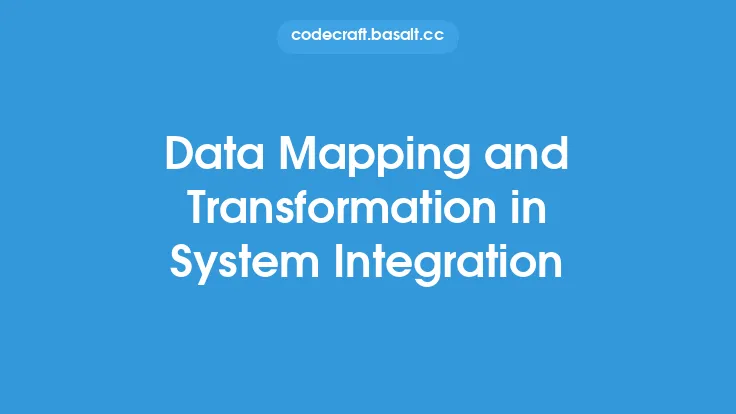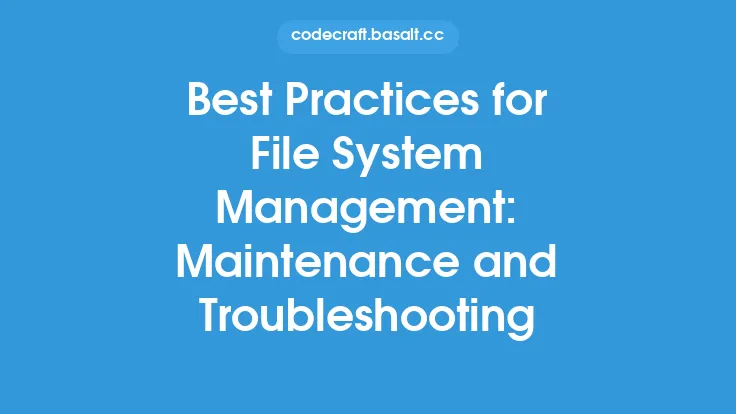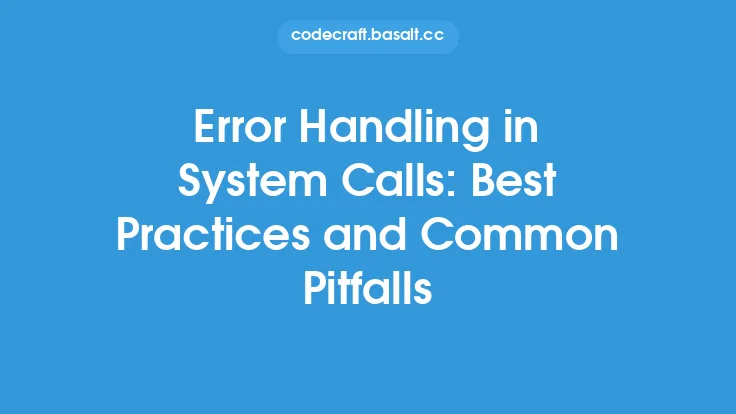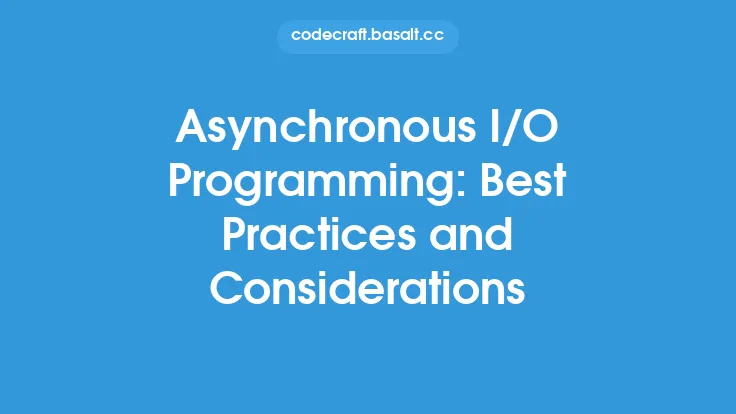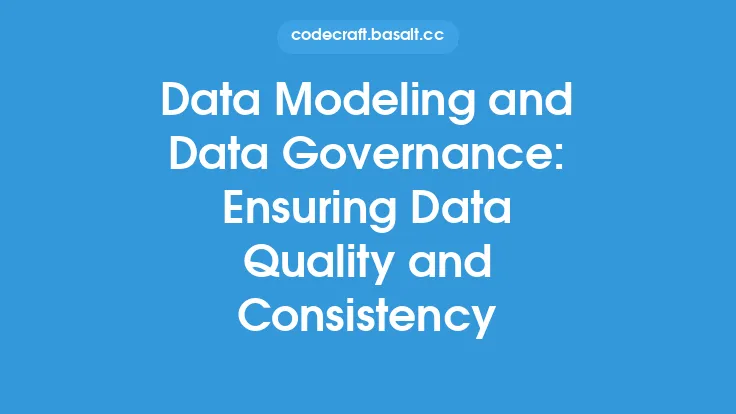System integration is a critical aspect of software architecture that enables different systems, applications, and services to communicate and exchange data seamlessly. One of the key challenges in system integration is ensuring data consistency across different systems, which is essential for maintaining data integrity, accuracy, and reliability. In this article, we will discuss the best practices for achieving system integration and data consistency, focusing on the technical and evergreen aspects of this topic.
Introduction to System Integration and Data Consistency
System integration involves connecting different systems, applications, and services to enable data exchange, synchronization, and coordination. Data consistency is a critical aspect of system integration, as it ensures that data is accurate, complete, and consistent across different systems. Inconsistent data can lead to errors, inconsistencies, and inaccuracies, which can have significant consequences in various industries, such as healthcare, finance, and e-commerce. To achieve data consistency, it is essential to implement best practices in system integration, data mapping, data transformation, and data validation.
Data Modeling and Schema Design
Data modeling and schema design are critical components of system integration and data consistency. A well-designed data model and schema can help ensure that data is consistent, accurate, and complete across different systems. Data modeling involves creating a conceptual representation of the data, including entities, attributes, and relationships. Schema design involves defining the structure and organization of the data, including tables, fields, and data types. To achieve data consistency, it is essential to use standardized data models and schemas, such as entity-relationship diagrams, object-relational mapping, and XML schema definitions.
Data Mapping and Transformation
Data mapping and transformation are critical components of system integration, as they enable data exchange and synchronization between different systems. Data mapping involves creating a mapping between the data elements of different systems, while data transformation involves converting data from one format to another. To achieve data consistency, it is essential to use standardized data mapping and transformation techniques, such as XML, JSON, and CSV. Additionally, data validation and data cleansing are critical components of data mapping and transformation, as they help ensure that data is accurate, complete, and consistent.
Data Validation and Data Cleansing
Data validation and data cleansing are critical components of system integration and data consistency. Data validation involves checking data for accuracy, completeness, and consistency, while data cleansing involves correcting or removing errors and inconsistencies in the data. To achieve data consistency, it is essential to use standardized data validation and data cleansing techniques, such as data profiling, data quality metrics, and data normalization. Additionally, data validation and data cleansing should be performed in real-time, as well as in batch mode, to ensure that data is consistent and accurate across different systems.
Service-Oriented Architecture (SOA) and Microservices
Service-oriented architecture (SOA) and microservices are popular architectural styles for system integration, as they enable loose coupling, scalability, and flexibility. SOA involves breaking down a system into smaller, independent services that communicate with each other using standardized interfaces and protocols. Microservices involve breaking down a system into smaller, independent services that communicate with each other using lightweight protocols and APIs. To achieve data consistency in SOA and microservices, it is essential to use standardized data models, schemas, and interfaces, as well as data validation and data cleansing techniques.
Enterprise Service Bus (ESB) and Message-Oriented Middleware (MOM)
Enterprise service bus (ESB) and message-oriented middleware (MOM) are popular technologies for system integration, as they enable data exchange, synchronization, and coordination between different systems. ESB involves using a centralized bus to integrate different systems and services, while MOM involves using message queues and topics to integrate different systems and services. To achieve data consistency in ESB and MOM, it is essential to use standardized data models, schemas, and interfaces, as well as data validation and data cleansing techniques.
Cloud-Based System Integration
Cloud-based system integration is a popular trend in software architecture, as it enables scalability, flexibility, and cost-effectiveness. Cloud-based system integration involves using cloud-based services and platforms to integrate different systems and services, such as Amazon Web Services (AWS), Microsoft Azure, and Google Cloud Platform (GCP). To achieve data consistency in cloud-based system integration, it is essential to use standardized data models, schemas, and interfaces, as well as data validation and data cleansing techniques. Additionally, cloud-based system integration requires careful consideration of security, scalability, and performance.
Conclusion
System integration and data consistency are critical aspects of software architecture, as they enable different systems, applications, and services to communicate and exchange data seamlessly. To achieve data consistency, it is essential to implement best practices in system integration, data modeling, data mapping, data transformation, data validation, and data cleansing. Additionally, standardized data models, schemas, and interfaces are critical components of system integration and data consistency. By following these best practices and using standardized technologies and techniques, organizations can ensure data consistency, accuracy, and reliability across different systems, which is essential for maintaining data integrity and achieving business success.
